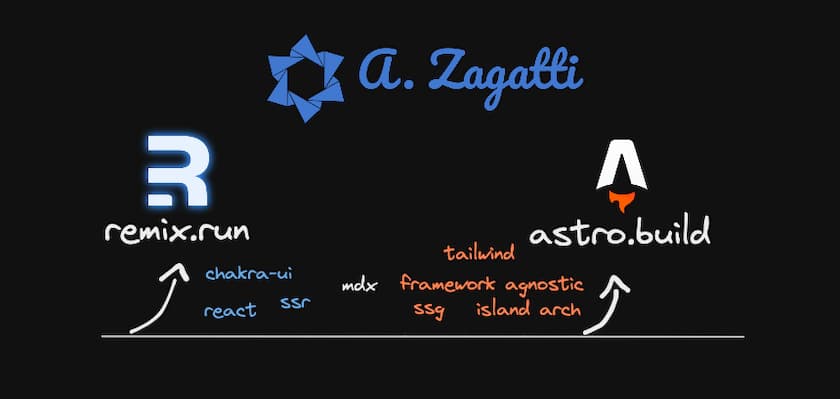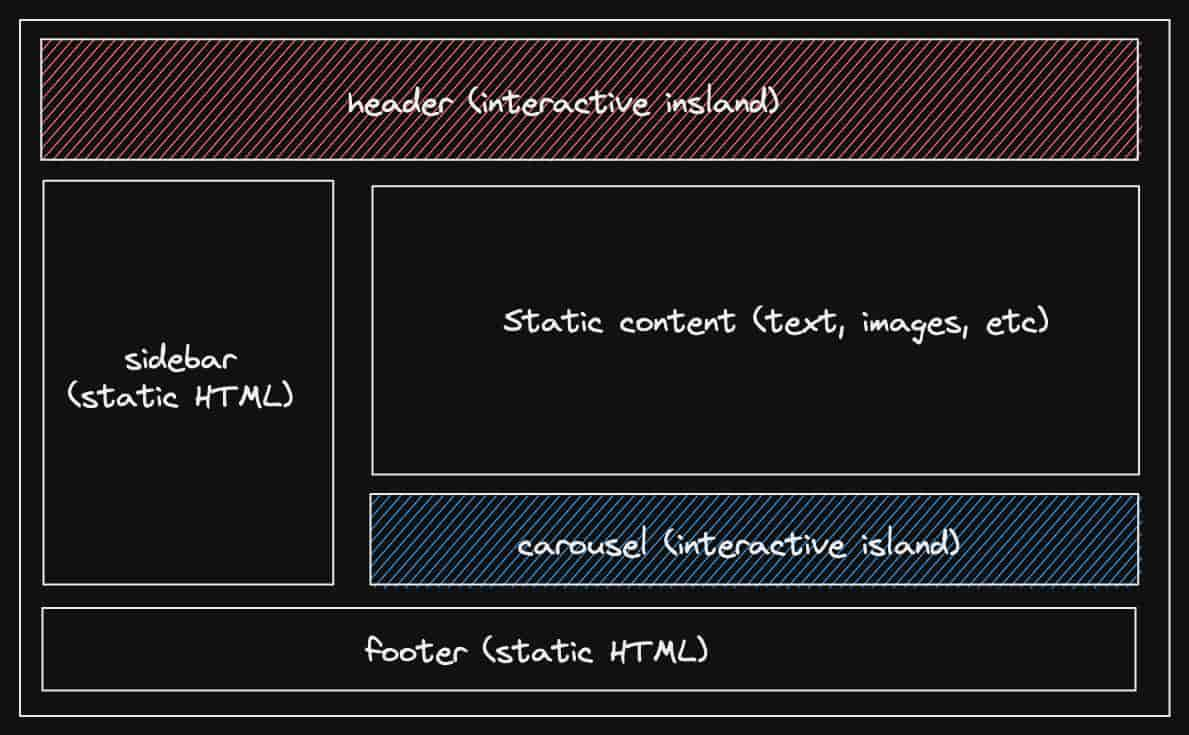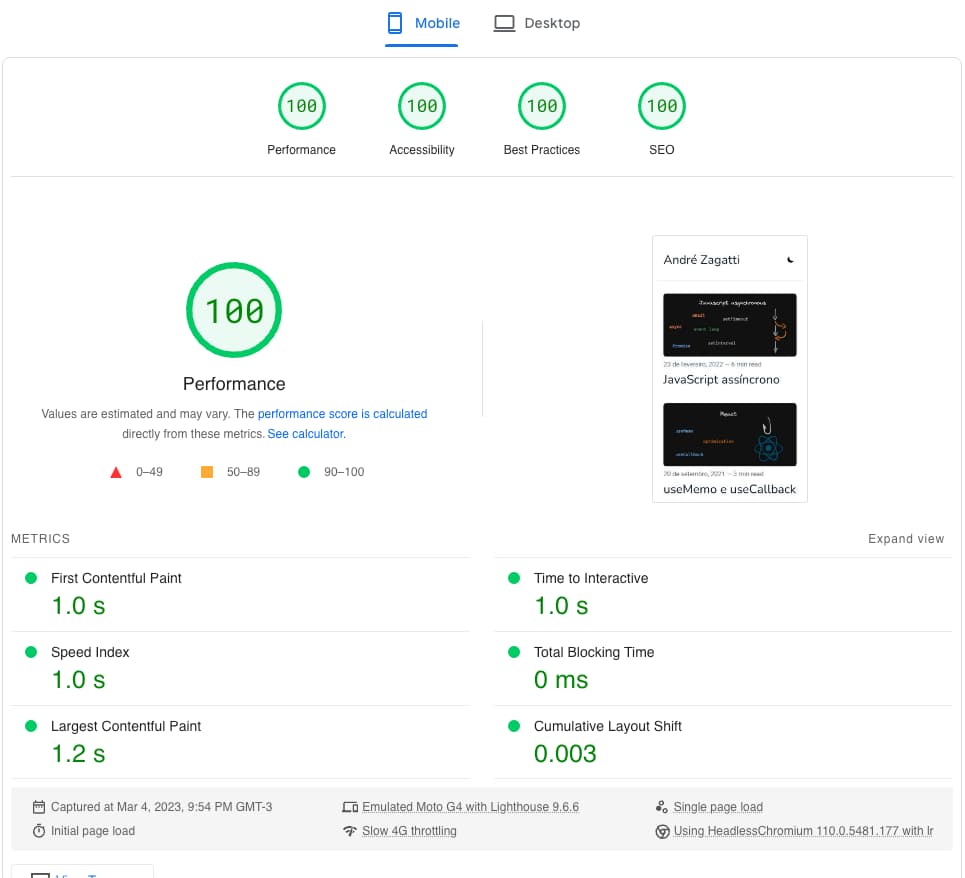The new azagatti.dev
March 6, 2023 — 5 min read

This is my first article after rebuilding this site and I am very happy to finally released the first version.
My old blog was made with Gatsby and its blog template, as I was starting the blog I made few changes and it worked perfectly, even though the hype around Gatsby has diminished I believe it is a great tool for what it proposes.
The idea of recreating the blog came to get out of this standard template and take this to study and test new tools, at some point the Remix was released in open form and a short time later an Kent C. Dodds article of how his new site was made using Remix, so I got the idea of trying out Remix and recreating of trying Remix and recreating my site.
First version with Remix
For those who don’t know Remix I leave the summary of the site itself:
Remix is a full stack web framework that allows you to focus on the user interface and work according to web standards standards to deliver a fast, elegant, and resilient user experience.
Summarizing my experience using Remix for this project, I can only say
this framework is sensational. Navigation, loading, error handling
forms, searching for data, and many other things that we do daily in web
web applications, it’s all so easy, useEffect, useState? Forget about loaders,
actions` and other features of Remix make the DX (developer experience) amazing,
as well as using web standards that we have been used to for decades.
So I created a project from scratch using Remix with Typescript, the creation of the project was very simple and I didn’t need to do much more than that. For styling I decided to go with the interface library Chakra UI because I had used it a few times before and liked the declarative model of styling, ease of implementing themes and being developed for React itself.
After making the new interface, I went on to the implementation of the blog itself, with this I used the library MDX Bundler library because it is widely used and already brings some settings ready, such as reading mdx` file and make use of the esbuild compiler.
The initial version with the MDX bundler worked, but in the Gatsby template there are already mdx plugins, like for example create a specific link to the post headers. for the post headers. With this the script to generate the article started with several steps, read the mdx file, pass the file and the plugins to the MDX bundler to the MDX bundler, wait for the esbuild build, on the main page sort the list of generated articles, get the data in the component and then render.

This build process is not that fast, so I used a local variable variable on the server to save the build whenever a deployment happens, Kent for Kent uses SQLite to save the generated articles.
I tested the production version locally and it worked perfectly, the first build the first build took a while but the following accesses were all very fast, so I decided to I decided to upgrade to production and test if everything was right.
That’s when I had the first “problem”, to run the MDX bundler on hosts like
Vercel, Netlify was more complex, Remix has adapters to work easily on those hosts
Remix has adapters to work easily in these hosts but the problem was to generate the articles in the server,
since these hosts use the serverless concept and only create and run the server
when needed, so the server created did not have access to the article files
articles files that were in another folder running with the site. I decided to look at other
hosts and found Fly, which is modern, resourceful, easy to use
to use and one more point is that Remix provides a ready-made configuration for
Fly.
Due to other commitments I was not able to advance this project much for a
for a while, but in some moments in the project I started to feel that the complexity
for a blog started to grow a lot, while in Gatsby everything was statically generated
with several plugins already in the initial template, with Remix for being SSR (server side rendering)
(server side rendering) I had to do a lot of things from scratch, besides thinking about the
infrastructure for the deployment. In the meantime busy with other things was
version 1.0 of Astro was released, and after watching
Fireship about Astro video and
read more about this framework, I decided to give it a chance to recreate the
blog.
Note: I still highly recommend Remix for dynamic application projects,
but since it does not provide an API for SSG (static site generator), other options
might do better.
How the Astro shines
For those who don’t know Astro I leave the summary of the site:
Extract content from anywhere and serve it up quickly with the
Astro’s next-gen island architecture.
Astro is an all-in-one web framework for creating fast, content-driven websites.
I will summarize a few points about Astro, but for the rest, I recommend reading in Why Astro?.
Astro is an interface library agnostic framework, it has its own
template that is used to create the pages that generate the
the application’s routes, but it is possible to create components with several interface
interface libraries such as: React, Svelte, Vue, Solidjs, among others,
integrations such as Tailwind and PartyTown, to see other integrations
integrations there is a own page.
The framework is agnostic and these integrations summarize what the architecture of
“when we use one of these frameworks to create a component, an “island
component, an “island” is created that is responsible for loading the necessary
the necessary JavaScript from the library and render the component in question by creating an
application called
MPA (Multi-Page Application),
about the architecture exists
a documentation.

Summarizing some points and leaving links to read more about Astro, I can tell you a little about my experience using this tool.
At first I used the blog template because it already comes with some integrations like mdx, rss, SEO tags and sitemap. Apart from integrations, I migrated from Chakra UI because it has no official integration with Astro and works only with React components. So I went with Tailwind which already has an official integration with Astro and is very popular, I have always followed it from the outside and never had the possibility of using Tailwind, except for some tests.
The interface was very easy to convert, the props that were used in the Chakra components
Chakra components became Tailwind class properties with almost no changes.
One point is that Chakra already provides a light/dark theme with integration into its
components using hooks in a very simple way, with Tailwind I had to
manually implement the styles in the components with the dark: selector and
with the dark class in the html tag, different but not complex.
With the adjustment in the interface the project was practically done, I threw the articles that were already done from the old blog and just adapted some data.
The structure of the project is pretty simple, the main components are written in React with Typescript
in React with Typescript, most of them being rendered statically and the
button is using a state to render the icon, so an “island” is
created an “island” for this button to load the React JS and have this state. As
commented before the components are framework agnostic but the pages we write
using the .astro format, this format is very simple to understand and
For now the pages are /blog and /blog/post, in the future I will
in the future I will create other pages and make the site more complete.
Thanks to Astro and as it says on its page why to use it:
Fast by default: It should be impossible to build a slow website with Astro.
The result on PageSpeed is very satisfactory.

Conclusion
Rebuilding my site was the best idea I had, because I had the opportunity to test
the Remix in several ways and see how this framework is amazing, has an absurd DX,
focuses on the web standards and is very robust to create an application with focus on
this whole dynamic part, rendering on the server, create a backend or even just a BFF even just a BFF` (backend for frontend), keeping everything in one project.
On the other side, I started using Astro shortly after its release and I can and I can say that whenever I need to create a site with a focus on content, aiming for performance, static pages static pages and several other features that the framework provides, besides the new features that are emerging, I should not consider any other tool besides Astro.
Of course I wouldn’t be without leaving the repository of both projects:
I hope this article was interesting, showed you a little bit about these two and clarified where and when to use each of them.
